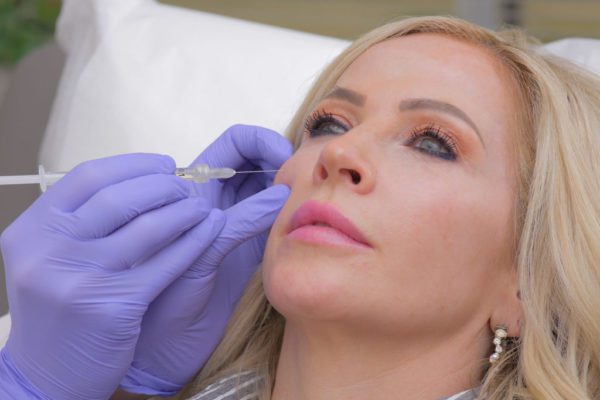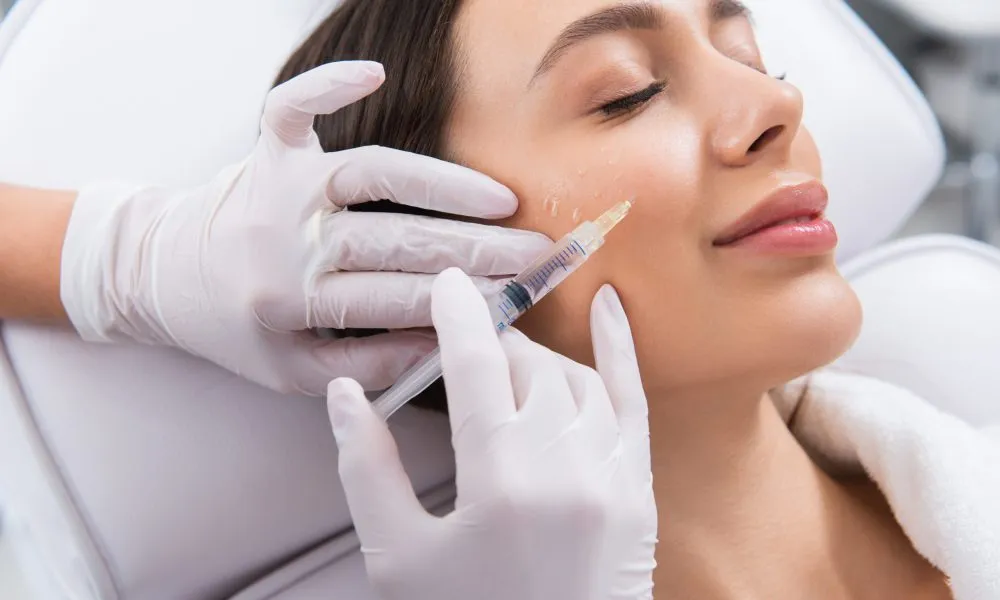Cheek fillers have become a popular way to enhance facial features, restore volume, and create a youthful appearance without the need for surgery. Whether you’re looking to correct volume loss, define your cheekbones, or smooth out fine lines, choosing the right cheek filler is essential for achieving natural and flattering results.
In this article, we’ll break down everything you need to know about choosing the right cheek fillers in Melbourne, from understanding different types of fillers to considering important factors like your skin type, desired results, and the expertise of the injector.
Introduction to Cheek Fillers
Cheek fillers are a non-surgical solution designed to restore volume, lift, and contour to the cheeks. Over time, our skin loses collagen and fat, leading to a hollowed or sunken appearance in the cheeks. Cheek fillers can help reverse these effects by adding volume and definition, giving the face a fuller, more youthful look.
The best part? Cheek filler treatments are quick, minimally invasive, and require little to no downtime, making them a popular choice for many.
Why Choose Cheek Fillers?
As we age, the natural volume in our cheeks diminishes, leading to sagging skin and a loss of facial contours. Cheek fillers offer a non-invasive way to lift and rejuvenate the area, creating a youthful appearance without undergoing surgery. Whether you’re aiming for a subtle enhancement or more dramatic cheek definition, fillers are a great option.
Some reasons people choose cheek fillers include:
- Restore volume and fullness: Especially if you’ve noticed your cheeks becoming hollow or sunken.
- Enhance facial contours: Highlight your cheekbones for a more sculpted look.
- Non-surgical solution: Cheek fillers offer a quick and minimally invasive alternative to facelifts or other surgeries.
- Instant results: Results can be seen immediately after the procedure, with minimal downtime.
Types of Cheek Fillers
Not all cheek fillers are the same. Various types of fillers are available, each designed to address different needs. Here’s a breakdown of the most common options:
1. Hyaluronic Acid Fillers (HA)
Hyaluronic acid is a naturally occurring substance in the skin that helps retain moisture and provide structure. HA fillers, such as Juvederm Voluma and Restylane Lyft, are the most commonly used for cheek enhancements. They are ideal for adding volume and hydration, and they offer a natural, smooth result.
- Pros: Immediate results, natural-looking, reversible, safe.
- Cons: Results are temporary, lasting 6 to 18 months.
2. Calcium Hydroxylapatite Fillers
Calcium hydroxylapatite (CaHA) fillers, such as Radiesse, are made from calcium microspheres suspended in a gel. These fillers are ideal for deeper volume loss and can also stimulate collagen production over time. They provide more structure and can last longer than hyaluronic acid fillers.
- Pros: Longer-lasting results (up to 18 months), stimulates collagen production.
- Cons: Less flexible than HA fillers, results are not immediately reversible.
3. Poly-L-Lactic Acid Fillers
Sculptra is a poly-L-lactic acid filler that works by stimulating collagen production in the skin. This filler is great for restoring volume gradually, and it’s ideal for people with more significant volume loss in the cheeks. Results develop over several months and can last for up to two years.
- Pros: Long-lasting, natural-looking, collagen-boosting.
- Cons: Takes time for results to appear, may require multiple sessions.
4. PMMA Fillers
Polymethylmethacrylate (PMMA) fillers, such as Bellafill, consist of tiny beads suspended in a gel that provides both immediate and long-term volume. PMMA is a more permanent filler, making it suitable for those looking for lasting results.
- Pros: Long-lasting and more permanent.
- Cons: Permanent, more expensive, requires a skilled practitioner to avoid complications.
Factors to Consider When Choosing a Cheek Filler
When choosing the right cheek filler for you, several factors should be considered to ensure the best possible results:
1. Desired Results
What are your goals for your cheek enhancement? Are you looking for a subtle lift or a more dramatic change? If you’re aiming for a subtle volume restoration, hyaluronic acid fillers may be the best choice. If you want more structure and definition, you might prefer calcium hydroxylapatite or poly-L-lactic acid fillers.
2. Longevity
Different fillers last for varying amounts of time. If you’re looking for long-term results, you may want to consider poly-L-lactic acid or calcium hydroxylapatite fillers. However, if you prefer something more temporary or want to “try out” a look, hyaluronic acid fillers may be a better fit.
3. Skin Type and Age
Your skin type and age can also influence the type of filler you should choose. Younger individuals with minimal volume loss may benefit from hyaluronic acid fillers, while older individuals with more significant volume loss might prefer the more robust results offered by calcium hydroxylapatite or poly-L-lactic acid.
4. Safety and Reversibility
Hyaluronic acid fillers are generally considered the safest option since they can be reversed with an enzyme called hyaluronidase if there are any complications. If you’re unsure about permanent results, starting with HA fillers is a great choice.
5. Budget
The cost of fillers varies depending on the type used, the area being treated, and the provider. Hyaluronic acid fillers tend to be more affordable compared to the longer-lasting or permanent options like PMMA fillers.
6. Practitioner’s Expertise
Choosing a qualified, experienced professional is crucial. A skilled injector will ensure that the filler is applied properly and will enhance your features naturally. Be sure to research providers and ask for before-and-after photos of previous patients.
Consultation: What to Expect
Before getting cheek fillers, you’ll have a consultation with a qualified practitioner. This is the time to discuss your goals, review different filler options, and assess your facial anatomy. Your provider will also explain the benefits, risks, and costs associated with the procedure.
During the consultation, the practitioner will:
- Assess the areas you’d like to treat.
- Discuss the type of filler that best meets your goals.
- Explain the expected results and any potential side effects.
- Provide guidance on aftercare and maintenance.

How to Prepare for Your Cheek Filler Treatment
To ensure the best results and minimize any complications, follow these pre-treatment tips:
- Avoid alcohol for 24 hours before your appointment to reduce the risk of bruising.
- Stop taking blood-thinning medications (like aspirin or ibuprofen) at least a week before the procedure, as these can increase the risk of bruising.
- Arrive makeup-free to your appointment so the area can be properly assessed and treated.
Expected Results and Aftercare
After your cheek filler treatment, you’ll notice an immediate improvement in volume and shape. While swelling and bruising are common, they usually subside within a few days. Results will continue to improve over time, especially if you’re using collagen-stimulating fillers like Sculptra.
Aftercare tips include:
- Avoid touching the treated area for the first 24 hours.
- Refrain from strenuous activity and heavy exercise for at least 24 hours.
- Use ice packs on the treated areas to reduce swelling.
- Avoid direct sun exposure and apply sunscreen to protect your skin.
Risks and Considerations
Although dermal fillers are generally safe, there are some risks, including:
- Bruising and swelling: These are common but temporary side effects.
- Lumps or unevenness: In rare cases, the filler may not settle evenly.
- Infection: As with any injection, there is a slight risk of infection.
- Allergic reactions: Although rare, some people may have a reaction to certain filler materials.
Always choose an experienced provider to minimize these risks.
Conclusion
Choosing the right cheek filler is a personal decision that depends on your goals, desired results, and preferences. Whether you’re looking to restore volume, enhance your cheekbones, or smooth out wrinkles, understanding the different types of fillers and considering factors like longevity, safety, and budget will help you make an informed choice. With proper consultation and care, cheek fillers can provide a natural, youthful look that enhances your facial features without the need for surgery.






More Stories
Shockwave for ED vs. Traditional treatments – A comprehensive comparison
Effective Ways to Manage Spinal Curvature in Adolescents
Enhance Your Culinary Experience: Pairing Cannabis Strains with Local Flavors